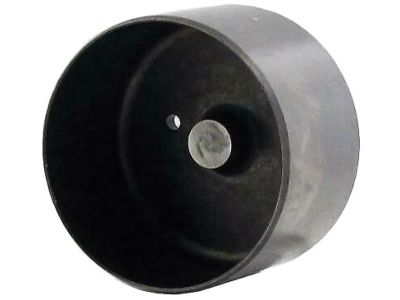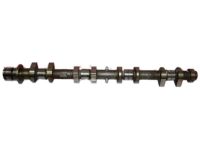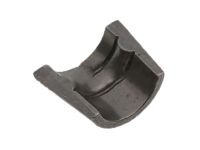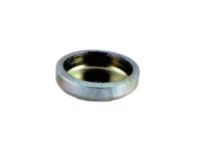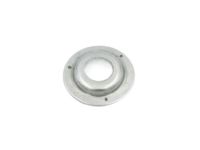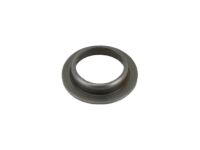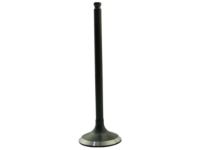Disconnect the cable from the negative terminal of the battery. Remove the valve cover and check the valve clearances, recording the measurements; if any valves are out of specification, they can be corrected before reinstalling the camshafts. For 2.0L engines, remove the timing chain cover and Camshaft Position (CMP) sensor, while for 2.5L engines, disconnect the electrical connectors from the Intake Valve Timing (IVT) control solenoid and the CMP sensor. Remove the IVT/camshaft sprocket cover bolts in reverse of the tightening sequence and take off the cover, using a sharp tool to cut the RTV sealant securing it. Remove the CMP sensor and its bracket. Loosen the right front wheel lug nuts, raise the vehicle securely on jackstands, and remove the right front wheel. Remove the inner fender splash shield. Position the engine at TDC on the compression stroke for the number one cylinder, marking the links of the timing chain that correspond to the timing marks on the camshaft sprockets, ensuring not to turn the camshaft(s) or crankshaft afterward to avoid valve damage. Use a screwdriver to retract the plunger of the chain tensioner, securing it with a drill bit or Allen wrench, and then remove the tensioner. Hold the hexagon part of the camshaft with a wrench and remove the camshaft sprocket bolts, then take off the sprockets. For 2.5L engines, remove the upper timing chain guide through the timing chain cover. Before removing the camshafts, check camshaft endplay with a dial indicator, ensuring the total movement does not exceed the limit; if it does, replace the camshaft or cylinder head. Loosen the camshaft bearing caps in reverse of the tightening sequence, carefully prying up the bridge on 2.0L engines while keeping the caps in order for reinstallation. Remove the bearing caps or bridge and lift the camshafts straight up and out, then pull the Lash Adjusters straight up and store them in numbered plastic bags or a marked box. Visually examine the camshaft lobes, journals, bearing caps, and Lash Adjusters for any signs of wear or damage, and measure camshaft journal diameter and lobe height with a micrometer, replacing any worn components. Check the oil clearance for each camshaft journal by cleaning the bearing caps and journals, laying the camshafts in place without lubrication, placing a strip of Plastigage on each journal, installing the bearing caps, and tightening the bolts in sequence. After removing the bolts and bearing caps, compare the width of the crushed Plastigage to the scale on the envelope, replacing components if the clearance exceeds specifications. Scrape off the Plastigage carefully to avoid damaging the journals or bearing caps. Apply moly-based engine assembly lubricant to the camshaft lobes and journals, then install the camshafts in their original positions at TDC, ensuring the dowel pins are correctly oriented. Apply a 1/8-inch bead of RTV sealant to the mating surface of the camshaft bridge for 2.0L engines, install the bearing cap bridge and bolts, and tighten them in sequence. For 2.5L engines, apply RTV sealant to the timing chain cover mating surface, install the bearing caps and bolts, and tighten them in sequence, being careful not to disturb the sealant when installing the no. 1 bearing cap. Install the camshaft sprockets and timing chain, aligning the marks made earlier with the timing marks on the sprockets. Complete the installation in reverse order of removal, checking and adjusting the valve clearance if any part of the valve train was replaced, then reconnect the battery and perform the necessary re-learn procedures.
Posted by NissanPartsDeal Specialist 
